Confused by retail ready packaging? Worried by its implications? Help is at hand, says Beth Brooks
Walk around Tesco’s Extra hypermarket near its headquarters in Cheshunt and you will grasp fairly quickly how retail ready packaging solutions are transforming the way business is done on the shop floor. You will spot the bananas sold on wheeled trollies, the chilled pizzas that are now stacked vertically in special units in the fridges and the cat litter that is being stocked in easy-to-handle crates. In fact, everywhere you look, there are new solutions on display.
Of course, that should not be too surprising as Tesco has been a frontrunner in the development of RRP - retail ready packaging - for the past two years. And Liz Hulbert, the retailer’s RRP project leader, says it is now developing solutions for frozen foods, crisps, wines and spirits, and clothing.
The retailer has also been working with suppliers to develop new solutions. It recently invited 1,000 suppliers to take part in a night-fill exercise in stores across the country so that they could see - first hand - the problems experienced in getting their products on to shelves. Hulbert says: “They were shown examples of what’s good and challenges were highlighted so that we could work out solutions together.”
To understand how big an impact RRP can make on a store’s operations, you need only look at one of the other products being targeted by Hulbert and her team - charcoal. It’s dirty and heavy, which can make it awkward for staff to pack on shelves. Yet, in a hypermarket, charcoal is a big seller and at this time of year needs frequent replenishment. The solution, says Hulbert, could be similar to the one used for Tesco’s high-volume cat litter line. Cat litter is stored in plastic crates on wheels, which allows the products to be moved into position without having to handle them directly. Plastic trays have been introduced underneath the crates to catch debris and keep shelves clean.
Okay, charcoal and cat litter are not traditional grocery lines. But these extreme examples highlight exactly why retailers are keen to develop RRP - it saves time, reduces risk of product damage, boosts availability and maximises product impact. Customers like it and it drives sales.
“RRP is easier for staff to handle,” says Hulbert, “And it makes it easier for customers to shop.”
Given all of that, why are so many suppliers worried? When The Grocer quizzed the executives who sit on our suppliers’ reader panel, we found that while 81% agreed RRP was a good idea, many had serious concerns about the implications and the way in which some retailers were implementing it. In particular, almost half felt their customers were pushing through RRP projects rather than genuinely working with them in a collaborative way. The suppliers who sit on our panel are closely involved in the RRP revolution. Their big concern relates to the speed at which things are developing, particularly as more retailers follow Tesco’s lead and implement their own strategies.
But what about those who are still in the dark about RRP and its ramifications? Well, if you are one of them, or just need to sense-check what you are doing, then help is at hand. A new best practice guide for retail ready packaging has just been published by ECR UK’s Retail Packaging Workgroup, after a year of work. This so-called Blue Book aims to provide a comprehensive and clear guide to all aspects of RRP for the industry.
It should, says co-author Tarun Patel of IGD, provide suppliers and retailers with any information they are missing, steering them through the definitions of RRP, why it is needed, key considerations and the steps needed to implement it. The Blue Book lists a best practice model for RRP, which includes the four key attributes of retail ready packaging solutions: easy ID and find; easy open; easy rotate and replenish; and easy return, recycle or dispose.
“On-shelf availability is a big industry issue,” Patel explains. “The Blue Book shows how RRP is an opportunity to improve availability because it enables products to be easily identified and put on shelf.”
In the guide’s ‘easy ID and find’ section, for example, it recommends that case markings and colour coding be used to help store staff recognise a product quickly and efficiently, improving the chance of getting it to the shelf and ensuring it is easily recognised by the shopper.
That’s easier said than done, of course. Retailers and suppliers have been working together for some time now under the auspices of the British Frozen Food Federation to develop an industry-standard colour coding scheme for cases, for example. And new categories throw up new challenges. Take wine, for instance. Hulbert says: “As wines and spirits are international products, we need to find a solution to fit the whole supply base. We are working on industry-standard symbols such as car discs - for example, red wine from France could have a red disc with a capital F.”
The key thing to remember, says Keith Rosser, RRP programme manager at Sainsbury and co-author of the ECR UK guide, is that any solution must be well thought through so that it make things better, not worse. He warns: “If a solution involves lots of cardboard it could lead to bad presentation and hide the goods, for example, and easy-open solutions may actually be harder to open and thus more time-consuming.”
That’s where the guide comes in, he says. “RRP is one of the key issues facing the industry. The guide is a very good start, as RRP is a potentially confusing subject. It takes the debate from shelf-ready packaging to a much wider one around in-store supply chain solutions.”
What works, what doesn’t
>>HOW RRP SOLutions are changing the way goods are presented in stores
The good
For an example of how RRP can make a massive difference, you only need stroll down the chilled food aisles at Tesco’s Extra store in Cheshunt and look at the pizza displays. Liz Hulbert, RRP project leader at Tesco, points out that chilled pizzas have traditionally been a hard product to merchandise. Before, the product was stacked flat on-shelf, with no merchandising on view. Now, RRP has been introduced that enables the pizzas to be stacked vertically - allowing customers to take them off the shelf easily and making it faster for staff to replenish.
The bad
For a hypermarket operator such as Tesco, with its wide variety of ranges, some products can be an absolute nightmare to display. And compost is one of them. Hulbert says Tesco is working on a solution for this product, which is heavy, dirty and currently laid flat on-shelf with no visible branding. As Tesco has found with cat litter and charcoal, retail ready packaging can help address these issues. Hulbert says Tesco is keen to work on a solution to ensure that branding is clearly visible, shelves remain clean and staff can fill the fixtures easily.
The ugly
Sometimes, RRP solutions work even if they do not look all that elegant. A good example is the wines section, where high-volume promotional lines are sold in RRP boxes. The perforations on these boxes are designed to make the packaging easy to open, but they can look untidy and Tesco is keen to improve these in the future. The retailer is also keen to find RRP solutions that minimise handling to avoid breakages. At the same time, it is looking to develop a case-coding scheme to make it easier to spot wine products at the back of the store.
Walk around Tesco’s Extra hypermarket near its headquarters in Cheshunt and you will grasp fairly quickly how retail ready packaging solutions are transforming the way business is done on the shop floor. You will spot the bananas sold on wheeled trollies, the chilled pizzas that are now stacked vertically in special units in the fridges and the cat litter that is being stocked in easy-to-handle crates. In fact, everywhere you look, there are new solutions on display.
Of course, that should not be too surprising as Tesco has been a frontrunner in the development of RRP - retail ready packaging - for the past two years. And Liz Hulbert, the retailer’s RRP project leader, says it is now developing solutions for frozen foods, crisps, wines and spirits, and clothing.
The retailer has also been working with suppliers to develop new solutions. It recently invited 1,000 suppliers to take part in a night-fill exercise in stores across the country so that they could see - first hand - the problems experienced in getting their products on to shelves. Hulbert says: “They were shown examples of what’s good and challenges were highlighted so that we could work out solutions together.”
To understand how big an impact RRP can make on a store’s operations, you need only look at one of the other products being targeted by Hulbert and her team - charcoal. It’s dirty and heavy, which can make it awkward for staff to pack on shelves. Yet, in a hypermarket, charcoal is a big seller and at this time of year needs frequent replenishment. The solution, says Hulbert, could be similar to the one used for Tesco’s high-volume cat litter line. Cat litter is stored in plastic crates on wheels, which allows the products to be moved into position without having to handle them directly. Plastic trays have been introduced underneath the crates to catch debris and keep shelves clean.
Okay, charcoal and cat litter are not traditional grocery lines. But these extreme examples highlight exactly why retailers are keen to develop RRP - it saves time, reduces risk of product damage, boosts availability and maximises product impact. Customers like it and it drives sales.
“RRP is easier for staff to handle,” says Hulbert, “And it makes it easier for customers to shop.”
Given all of that, why are so many suppliers worried? When The Grocer quizzed the executives who sit on our suppliers’ reader panel, we found that while 81% agreed RRP was a good idea, many had serious concerns about the implications and the way in which some retailers were implementing it. In particular, almost half felt their customers were pushing through RRP projects rather than genuinely working with them in a collaborative way. The suppliers who sit on our panel are closely involved in the RRP revolution. Their big concern relates to the speed at which things are developing, particularly as more retailers follow Tesco’s lead and implement their own strategies.
But what about those who are still in the dark about RRP and its ramifications? Well, if you are one of them, or just need to sense-check what you are doing, then help is at hand. A new best practice guide for retail ready packaging has just been published by ECR UK’s Retail Packaging Workgroup, after a year of work. This so-called Blue Book aims to provide a comprehensive and clear guide to all aspects of RRP for the industry.
It should, says co-author Tarun Patel of IGD, provide suppliers and retailers with any information they are missing, steering them through the definitions of RRP, why it is needed, key considerations and the steps needed to implement it. The Blue Book lists a best practice model for RRP, which includes the four key attributes of retail ready packaging solutions: easy ID and find; easy open; easy rotate and replenish; and easy return, recycle or dispose.
“On-shelf availability is a big industry issue,” Patel explains. “The Blue Book shows how RRP is an opportunity to improve availability because it enables products to be easily identified and put on shelf.”
In the guide’s ‘easy ID and find’ section, for example, it recommends that case markings and colour coding be used to help store staff recognise a product quickly and efficiently, improving the chance of getting it to the shelf and ensuring it is easily recognised by the shopper.
That’s easier said than done, of course. Retailers and suppliers have been working together for some time now under the auspices of the British Frozen Food Federation to develop an industry-standard colour coding scheme for cases, for example. And new categories throw up new challenges. Take wine, for instance. Hulbert says: “As wines and spirits are international products, we need to find a solution to fit the whole supply base. We are working on industry-standard symbols such as car discs - for example, red wine from France could have a red disc with a capital F.”
The key thing to remember, says Keith Rosser, RRP programme manager at Sainsbury and co-author of the ECR UK guide, is that any solution must be well thought through so that it make things better, not worse. He warns: “If a solution involves lots of cardboard it could lead to bad presentation and hide the goods, for example, and easy-open solutions may actually be harder to open and thus more time-consuming.”
That’s where the guide comes in, he says. “RRP is one of the key issues facing the industry. The guide is a very good start, as RRP is a potentially confusing subject. It takes the debate from shelf-ready packaging to a much wider one around in-store supply chain solutions.”
What works, what doesn’t
>>HOW RRP SOLutions are changing the way goods are presented in stores
The good
For an example of how RRP can make a massive difference, you only need stroll down the chilled food aisles at Tesco’s Extra store in Cheshunt and look at the pizza displays. Liz Hulbert, RRP project leader at Tesco, points out that chilled pizzas have traditionally been a hard product to merchandise. Before, the product was stacked flat on-shelf, with no merchandising on view. Now, RRP has been introduced that enables the pizzas to be stacked vertically - allowing customers to take them off the shelf easily and making it faster for staff to replenish.
The bad
For a hypermarket operator such as Tesco, with its wide variety of ranges, some products can be an absolute nightmare to display. And compost is one of them. Hulbert says Tesco is working on a solution for this product, which is heavy, dirty and currently laid flat on-shelf with no visible branding. As Tesco has found with cat litter and charcoal, retail ready packaging can help address these issues. Hulbert says Tesco is keen to work on a solution to ensure that branding is clearly visible, shelves remain clean and staff can fill the fixtures easily.
The ugly
Sometimes, RRP solutions work even if they do not look all that elegant. A good example is the wines section, where high-volume promotional lines are sold in RRP boxes. The perforations on these boxes are designed to make the packaging easy to open, but they can look untidy and Tesco is keen to improve these in the future. The retailer is also keen to find RRP solutions that minimise handling to avoid breakages. At the same time, it is looking to develop a case-coding scheme to make it easier to spot wine products at the back of the store.



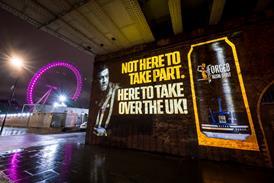




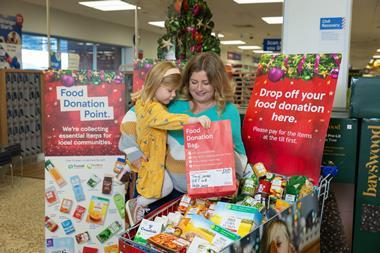
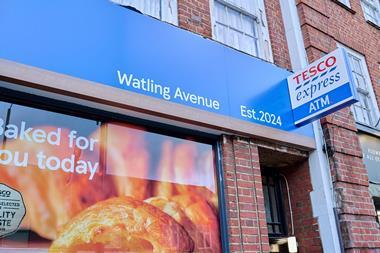
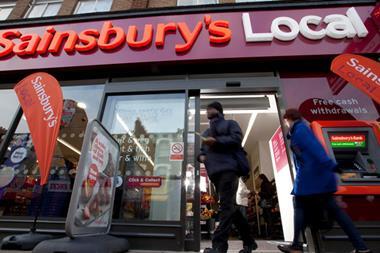


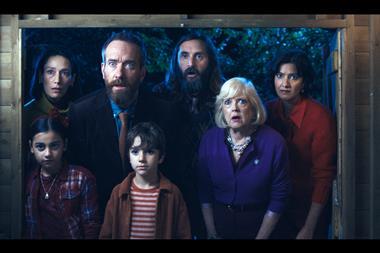




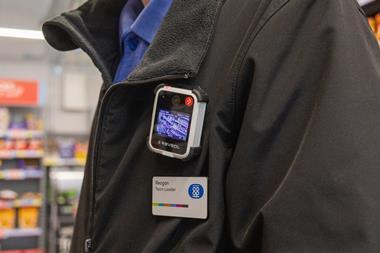
No comments yet